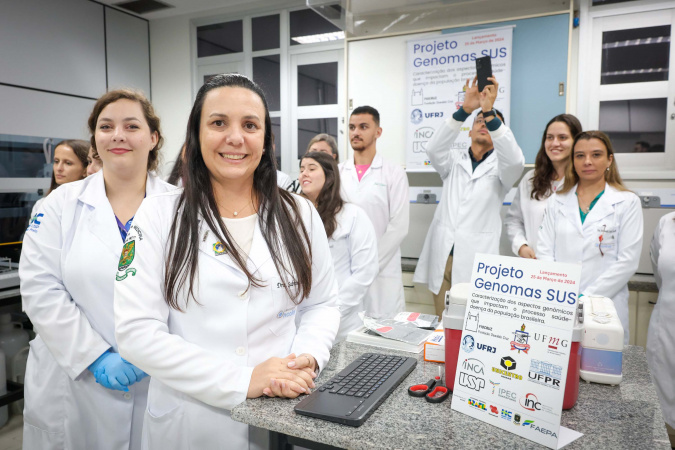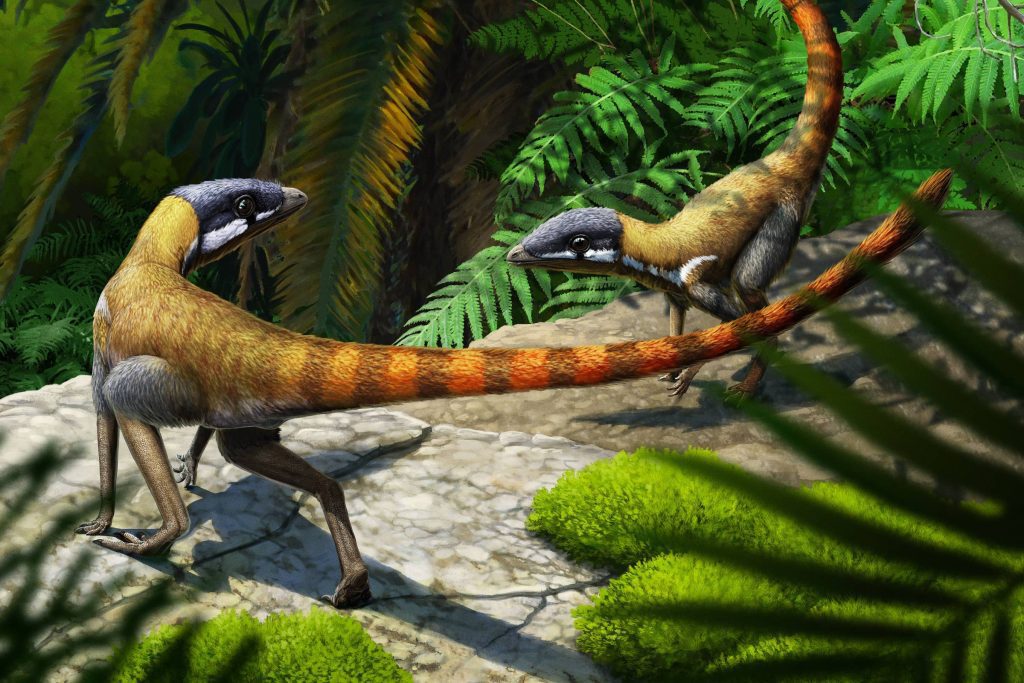A new study has revealed what the animal’s skeleton considered a “cousin” of the ancestors of pterosaurs, the flying reptiles that lived on Earth from the Triassic to the end of the Cretaceous period (from 220 million to about 65 million years ago) as.
The fossil in question, named Scleromochlus TaylorIt was first described in 1907 by the English paleontologist Arthur Smith Woodward, but at that time the researcher considered it a primitive dinosaur.
Subsequent studies of the fossil—which contains at least seven known skeletons—classified it differently, as it is a basal archosaur reptile (a group that includes crocodiles, modern birds, and their extinct relatives), basal afmitarsal (a group that includes, on the one hand, pterosaurs, and on the other hand, dinosaurs, including birds) and even as the ancestors of dinosaurs.
The new searchIt was published in the Wednesday (5) edition of the scientific journal Nature, in light of modern computerized microscopy techniques – the same technology used in medical examinations, for example, to see the internal structures and organs of the body. This technique was crucial in revealing body shapes and bones that were previously unknown or misinterpreted in the past.
The study involved researchers from the National Center for Museums in Scotland, the Universities of Birmingham, Bristol, Edinburgh and the Natural History Museum in London, all in the UK, from the Department of Geosciences at Virginia Tech, US, who received his Ph.D. from the University of Erlangen-Nuremberg in Germany, the Chinese Academy of Sciences in China.
skeletons S. Taylor They were discovered in limestone rocks in the north of Scotland, near the municipality of Elgin, in very thin sheets, pressed against the rocky sediments, and it is difficult to visualize the structures being inserted into the plate. This means that most of the existing bones were actually represented by the corresponding template of the same bone – that is, the mark the bone leaves in the rock, but the bone itself is no longer present. Using these plates as templates, ancient studies of fossils used resin and other compounds to produce copies of the skeleton, making it possible to study the structures of an organism, but without destroying them.
However, some of these interpretations in the past were wrong or did not take into account the tabuntic components of the fossil in question (that is, relating to the post-mortem events of the animal, but before fossilization), explains Paul Barrett, researcher emeritus at the Museum of History born in London and senior author the study.
The so-called “elgin reptiles” [como originalmente chamados por Woodward] They are not the most pure and complete or the best preserved skeletons, such as those shown in museums. The researcher said that the use of tomography has revolutionized the study of these hard-to-recognize skeletons, and made it possible to reproduce more detailed and accurate reconstructions of how these animals were in the past.”
Some of these details that have been revealed are the long tail, the front part of the upper jaw is thin and long (as in many pterosaurs), and the body is relatively small in relation to the size of the head (something that reached even higher in pterosaurs). growth levels compared to pterosaurs). head), all of which indicate that S. Taylor It is an animal with characteristics of both primitive pterosaurs and lagerpetids (the sister group of pterosaurs), explains first author of the study David Vova.
“In addition, the long upper and lower limbs, but without the ‘arms’ being longer than the lower ones, suggest that this animal may have taken a bipedal posture, not a four-legged posture, as has already been suggested for animals considered to be the ancestors of pterosaurs.”
For a long time, the origin of these flying reptiles, which are the precursors of flight in vertebrates and even today the largest winged creatures found on Earth, was unknown to paleontologists. Recent research, including one led by Brazilian scientists, revealed that small tree-dwelling reptiles and running on two legs were possible ancestors of the group – the so-called lagerpetids.
“The new research contains a reasonable amount of evidence to put S. Taylor Both at the base of the lagerpetids, as a member of them, and as a sister group [ou ‘primo’ distante] Of those with pterosaurs,” Vova continues.
Now, the next step in completing the pterosaur “evolution tree” needs a little luck. That’s because in a period of about 20 million years separating the oldest known lagerptides from the fossils of pterosaurs themselves, with bodies adapted for flight, no fossils considered intermediate or “missing links” have been found yet.
“An ancestral fossil can be found anywhere in the world in rocks dating back 240 to 220 million years, and finding these specimens is the ‘million dollar question’,” says the paleontologist.
For Barrett, the answer to this golden question may be much closer than scientists realize. “The ancestor can be found in a drawer in some of the scientific collections that are there. That is why the collections in museums are so important, because only through them can we access already known fossils, and using innovative techniques, new discoveries. This is the real advance of science,” he said. Says.

“Hardcore beer fanatic. Falls down a lot. Professional coffee fan. Music ninja.”


/https://i.s3.glbimg.com/v1/AUTH_bc8228b6673f488aa253bbcb03c80ec5/internal_photos/bs/2024/I/A/y1UC8BSM2QAs1A0POQJw/15.jpg)

:strip_icc()/i.s3.glbimg.com/v1/AUTH_59edd422c0c84a879bd37670ae4f538a/internal_photos/bs/2024/k/3/ku1hBFTEWHK6mkJTjuBA/img-20240424-wa0026.jpg)


More Stories
Why can't we resist gossip? Science explains!
Genoma SUS is recruiting fellows in the fields of data science and bioinformatics
A study reveals 5 healthy fruits in the world; See what they are